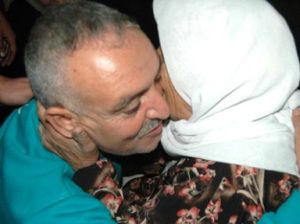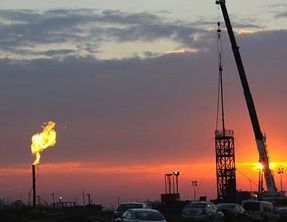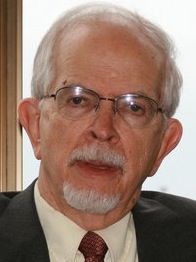
Publisher:
Bonnie King
CONTACT:
Newsroom@Salem-news.com
Advertising:
Adsales@Salem-news.com

~Truth~
~Justice~
~Peace~
TJP
Nov-04-2013 20:21

 TweetFollow @OregonNews
TweetFollow @OregonNews
Do Peace Talks Point to a Carthagenian Peace?
Dr. James M. Wall Salem-News.comIn August of this year, I suggested in Wall Writings that we study the ominous signs that indicate Israel seeks neither fairness nor justice in its dealings with its neighbors in the Middle East region.
 The picture at top was taken by Allison Degan in the early morning hours of October 30. Her story and her pictures appeared in Mondoweiss. The picture at the bottom is from Middle East Monitor. |
(CHICAGO) - On December 24, 2009, the Israeli oil exploration company Givot Olam, posted two media announcements a few hours apart.
Givot Olam’s first announcement revealed that “significant quantities” of oil had been found in the mud of Meged 5, a drill site close to the Palestinian village of Rantis, north west of Ramallah.
Rantis is located close to the Green Line, the 1967 line that initially separated Israel from the West Bank. Israel had been searching for oil around Rentis since at least 2002, an action in violation of international law as well as a violation of the Oslo Agreement, which required that Israel and Palestine refrain from any unilateral exploration of national resources in the occupied territories.
Oil development in the West Bank would boost the Palestinian economy. It could also help develop a strong Palestinian nation on the east side of the Green Line.
The game Israel has played with its decade long development of an oil field that clearly extends well into the West Bank, is a game Israel intends to win.
The Applied Research Institute of Jerusalem (ARIJ), describes the village of Rantis where the game is being played.
- Rantis, is a small Palestinian village located to the northwest of Ramallah district in the Palestinian West Bank. It has a total population of 2688 inhabitants and a built up area of 458 dunums (115 Acres). The village is inhabited mostly by 6 clans (Wahdan, Hallaf, Ballot, Dar Abo Salim, Al Yahee, Hawashe. Most of Rantis villagers depend on agriculture as their main source of income. . . . In 1967 the Israeli forces confiscated most of the Palestinian agricultural lands in the village for colonizing purposes, and hundreds of olive trees were uprooted.
- Today, the village of Rantis is surrounded by a set of settlements and Israeli military areas, such as Ofrim and Beit Arye settlements which are located to the east of the village in addition to a military area located to the northwest of the village. Recently, the village lands became threatened by Israeli land confiscation activities for constructing the Segregation Wall.
Israel has worked hard to build its “security-focused” future. It has been constructing its segregation wall (a “security” wall in Israel’s narrative) since 2002. The segregation wall runs deep into great sections of the West Bank. The wall moves in directions that have nothing to do with security and everything to do with Israel’s long-range economic planning.
Givot Olam had been told by the IOF that those eager television crews that had rushed into the West Bank could not film in the area because the Meged 5 oil well “is located in an IDF firing zone”.
After a few hours of excitement over Meged 5′s oil-filled mud site, a second media announcement appeared. Posting number two announced that the Israeli Occupation Forces (IOF) had closed the Meged 5 area to the media. For the moment at least, Meged 5 was another Dimona, Israel’s not-yet-admitted nuclear arms site, with its details hidden from public view.
Even without pictures, and no doubt to the delight of Givot Olam’s share holders, the company’s stock rose 177% by market close December 24, 2009 .
Israel’s peace negotiators have been sitting around a peace table with Palestinian leaders and U.S. mediators. Meanwhile, there is no halt to Israel’s settlement development on Palestinian land, nor its oil exploration around the village of Rantis.
Israel’s march toward total domination of the land between the sea and the river, plays like a bad dream from which the victims cannot wake up. Unfortunately, it is not a dream but a well orchestrated game of pretense designed to extend the Nakba into the 21st century.
Incremental prisoner releases by Israel’s occupying military power bring brief moments of Palestinian family reunion joy (see picture above, from Ramallah) but along with the joy is the reality of a powerless Palestinian population, trapped in an open air prison, watching its land, and natural resources stolen, while too many of its young men grow old in Israeli prisons.
In August of this year, I suggested in Wall Writings that we study the ominous signs that indicate Israel seeks neither fairness nor justice in its dealings with its neighbors in the Middle East region. I suggested that Israel’s policies appear to be pushing for a carthagenian peace imposed on Palestine.
The context of that posting was the development of natural gas fields off the coast of Gaza. Israel wants control of those gas fields because, under its present government and with its current strong backing from the U.S. Congress, Israel’s economic future depends on its total destruction of a viable Palestinian state. And that is the definition of a carthagenian peace, the reduction of a defeated enemy to utter destruction.
In that posting, I suggested the possibility that Israel’s current government is pushing toward a modern day carthaginian peace. This is part of that posting:
- The term, “carthaginian peace” entered history after Rome defeated Carthage in the Punic Wars, fought from 254 BC to 146 BC.
- A carthaginian peace is the imposition of a very brutal peace that crushes an enemy. If such a disastrous conclusion is reached by the Kerry-run peace talks, we will face a modern version of the end of the Punic Wars, which were, according to Wikipedia:
- “a series of three wars fought between Rome and Carthage from 264 BC to 146 BC. At the time, they were probably the largest wars that had ever taken place. The term Punic comes from the Latin word Punicus (or Poenicus), meaning “Carthaginian”, with reference to the Carthaginians’ Phoenician ancestry.[3] The main cause of the Punic Wars was the conflict of interests between the existing Carthaginian Empire and the expanding Roman Republic.”
- The term carthaginian peace, was most recently used to describe the peace terms the U.S. and its Allies imposed on Germany in the Treaty of Versailles, at the conclusion of World War I. Ironically, it was this unjust and vengeful carthaginian peace forced upon a defeated Germany that contributed to the rise of Hitler and the Holocaust in which six million Jews died.
- If the U.S and Israel succeed in forcing Palestine to endure a carthaginian peace, it will be a peace sold to the world as necessary to protect the “security needs” of Israel, which will, on cue, claim that the peace agreement is needed to prevent the annihilation of the Jewish people, a trope that has lived well past its expiration date.
Fast forward from 2009 to Friday, January 13, 2012, when Mohammed Mar’i wrote from Ramallah for Arab News:
- The Palestinian Authority Thursday accused Israel of drilling a new oil and natural gas well in the West Bank.
- Jamil Al-Mutawer, vice chairman of the [Palestinian] Environmental Quality Authority, said that Israel started unilateral exploration activities in a gas and oil well near the West Bank village of Rantees (Rantis), to the west of Ramallah. He added that the Israeli security forces had beefed up presence in the area, preventing villagers from reaching their lands and farms to keep the exploration work a secret.
- Al-Mutawer said the well is part of the Meged oilfield that is located alongside the wall that separates Israel from the West Bank.
Al-Mutawer added that the Israeli Givot Olam Oil Ltd company “started the exploration activities in the field in 2004 without consulting or coordinating with the PA.” He estimated that the field contains 1.5 billion barrels of oil and about 1.82 billion cubic meter of natural gas.
- Givot Olam said that it discovered the Meged oilfield in 2004. The company said it produces 1,000 barrels every day and it is scheduled to develop the production by 2012.
Rantis has been on Israeli’s “security” radar screen for some time. Most recently, the website Occupied Palestine reported (June, 2013) that “Informed Palestinian official sources revealed that the Israeli occupation authority (IOA) changed the path of its segregation wall in Rantis village, northwest of Ramallah city in order to drill oil and gas wells”.
Which brings us to this first week of November, 2013, where the story of the village of Rantis enters its current chapter. Student activists in Rantis have posted pictures of oil drilling in the Rantis area.
The Middle East Monitor describes the problem Israel faces as it tries to deny its history of stealing Rantis land by using its “security wall” ploy.
 The Israeli Meged-5 Oil Well is located on the edge of the Palestinian village of Rantis, which falls within the governorate of Ramallah. When the path of the Wall was amended by Israel to take in even more Palestinian land, it was supposedly done for “security reasons”.
The Israeli Meged-5 Oil Well is located on the edge of the Palestinian village of Rantis, which falls within the governorate of Ramallah. When the path of the Wall was amended by Israel to take in even more Palestinian land, it was supposedly done for “security reasons”.- Later it was discovered that an Israeli oil company, in cooperation with an American company, is developing and exploring the potential of an oil field which was found in the 1980s. The well was abandoned in the belief that it was not going to be commercially viable.
- Givot Olam, the only Israeli company licensed for oil drilling, discovered Meged-5 in 2004 and said that it was a “commercial discovery”. In 2007 the company signed an agreement with US-owned Shire International to invest $50 million. Two years later the partnership announced that it had found signs of significant quantities of oil at the site.
On November 3, 2013, Jonathan Cook provided the economic details for Al Jazeera.
- Shares in Givot Olam, an Israeli oil exploration company, rallied on reports that it had located much larger oil reserves at its Meged 5 site than previously estimated.
- The company, which says it has already sold $40 million worth of oil since the Meged field went operational in 2011, now believes that the well is sitting on exploitable reserves of as much as 3.53 billion barrels – about a seventh of Qatar’s proven oil reserves.
- Only one cloud looms on the horizon. It is unclear how much of this new-found oil wealth actually belongs to Israel. The well sits on the so-called Green Line, the armistice line of 1948 that formally separates Israel from the occupied Palestinian territories.
- According to Palestinian officials, Israel has moved the course of its concrete and steel separation wall – claiming security – to provide Givot Olam with unfettered access to the site, between the Israeli town of Rosh Haayin and the Palestinian village of Rantis, north-west of Ramallah.
- Dror Etkes, an Israeli researcher who tracks Israeli activities in the West Bank, said the Meged site was “a few dozen metres” inside the Green Line.
- Israel and Givot Olam, however, have made access difficult, arguing that Meged 5 is affected by an Israeli military firing range next to it on the other side of the Green Line, in occupied Palestinian territory. In the past, Israeli media have been barred from filming or photographing the site.
Israel has been consistent in its exploitation of Palestinian natural resources, including its water, natural gas and oil. And it has been consistent in its expansion into Palestinian land with is steadily expanding settlements.
In an especially egregious act carried out during the U.S. mediated peace talks. Israel refused to even enter the peace talks unless Palestine and the U.S., agreed to Israeli demands that staggered releases of Palestinian prisoners from Israeli prisons had to be “balanced” with additional illegal Israeli settlement growth in the West Bank.
That act is just one of many which suggests that what Israel seeks for its “secure future” could be a carthaginian peace with Palestine, a peace brokered by and enforced by, a compliant U.S. government.
We will not know this for sure until the peace talks reach a stopping point and the conditions for peace are announced. One Israel political leader from the Mertz party, has indicated that a final peace plan will be announced in January, 2014. So far, the conduct of Israel’s government points more to a carthaginian peace, than to a peace that is fair and just.
http://wallwritings.me/2013/11/04/do-peace-talks-point-to-a-carthagenian-peace/
Please visit James Wall's Website, Wall Writings
 Journalism was Jim Wall’s undergraduate college major at Emory University, Atlanta, Georgia. He has earned two MA degrees, one from Emory, and one from the University of Chicago, both in religion. An ordained United Methodist clergy person; he and his wife, Mary Eleanor, are the parents of three sons, and the grandparents of four grandchildren. They live in Elmhurst, Illinois.
Journalism was Jim Wall’s undergraduate college major at Emory University, Atlanta, Georgia. He has earned two MA degrees, one from Emory, and one from the University of Chicago, both in religion. An ordained United Methodist clergy person; he and his wife, Mary Eleanor, are the parents of three sons, and the grandparents of four grandchildren. They live in Elmhurst, Illinois.
Jim served for two years on active duty in the US Air Force, and three additional years in the USAF (inactive) reserve. While serving with the Alaskan Command, he reached the rank of first lieutenant. He has worked as a sports writer for both the Atlanta Journal and Constitution, was editor of the United Methodist magazine, Christian Advocate for ten years, and editor and publisher of the Christian Century magazine for 27 years, starting in 1972. Time magazine wrote about the new editor, who arrived at the Christian Century determined to turn the magazine into a hard-hitting news publication. The inspiration for Wall Writings comes from that mindset and from many other sources that have influenced Jim’s writings over the years, including politics, cinema, media, American culture, and the political struggles in the Middle East. Jim has made more than 20 trips to that region as a journalist, during which he covered such events as Anwar Sadat’s 1977 trip to Jerusalem, and the 2006 Palestinian legislative election. He has interviewed, and written about, journalists, religious leaders, political leaders and private citizens in the region. You can write to Jim Wall at jameswall8@gmail.com. Visit Jim's Website: Wall Writings
 |
 |
 |
Articles for November 3, 2013 | Articles for November 4, 2013 | Articles for November 5, 2013

googlec507860f6901db00.html
Salem-News.com:



Terms of Service | Privacy Policy
All comments and messages are approved by people and self promotional links or unacceptable comments are denied.
[Return to Top]
©2025 Salem-News.com. All opinions expressed in this article are those of the author and do not necessarily reflect those of Salem-News.com.